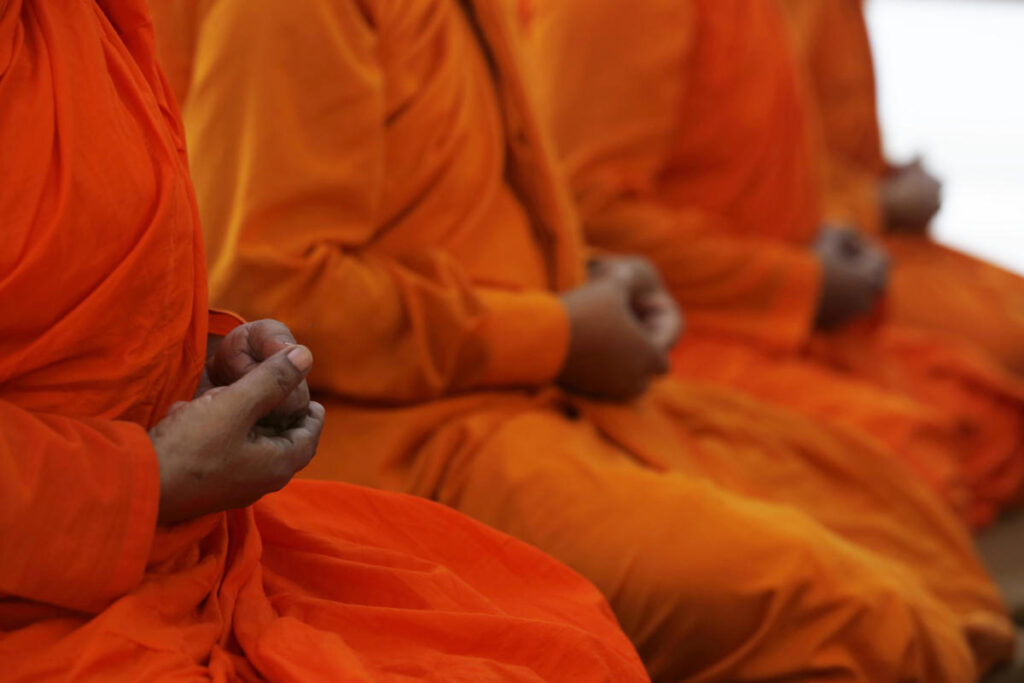In a shocking revelation, authorities in Thailand are investigating a Buddhist monastery, Pa Nakhon Chaibovorn, located in Phichit province, after the discovery of 41 human bodies on the site, allegedly utilized for meditation practices. The police reported that these bodies were accompanied by death and body donation certificates, indicating that there might have been some form of consent involved in their use. However, the investigation is ongoing, and police are in the process of contacting the relatives of the deceased to validate whether the bodies were willingly donated. Ensuring that none of the bodies were obtained through illicit means is a priority for law enforcement. This investigation follows the unsettling discovery of 12 additional bodies at another monastery in Kamphaeng Phet province just a few days earlier, hinting at a potentially broader issue within religious institutions in the region.
Phra Ajarn Saifon Phandito, the head of the Phichit monastery, defended the practice of using corpses in meditation as part of a unique technique he has developed. According to him, many practitioners, including abbots and monks, come to learn and pass on this technique. He described how the method involves meditation in pavilions where coffins containing human remains are present. While this practice may be rooted in a meditation tradition, it raises significant ethical questions about the treatment of deceased individuals and their families’ consent regarding the use of their loved ones’ bodies in religious rituals.
Kom Pattarakulprasert, the director of the Phichit Office of Buddhism, expressed his surprise upon learning about the bodies’ discovery, especially after having been assured by Phra Ajarn Saifon that no cadavers were present at the monastery. The conflicting accounts have led Kom to question the appropriateness of such practices within the Buddhist community. He has indicated that he will engage in discussions with local clergy about the merits and ethical implications of using human remains in meditation, emphasizing the need for clarity on this sensitive issue.
The implications of this case extend beyond just the Phichit province. Thai authorities are collaborating with agencies in neighboring provinces to investigate how widespread this practice of using human remains in meditation might be. Given the recent discoveries, it may point to a troubling trend where such occurrences could be more common in Buddhist monastic traditions than previously thought. The investigation not only aims to uncover the legality of these practices but also to ensure adherence to ethical standards surrounding death and the treatment of human remains in religious contexts.
As the investigation unfolds, it remains to be seen what measures might be adopted to prevent such occurrences in the future. The situation underscores the importance of maintaining respectful and ethical practices within religious institutions. It invites a broader conversation about the boundaries of ritual and meditation, especially concerning the handling of human remains, which is culturally and ethically fraught. Public and religious leaders will need to navigate these sensitive waters carefully, balancing tradition and respect for the deceased and their families.
Overall, the ongoing inquiry into the Pa Nakhon Chaibovorn monastery highlights the complexities inherent in merging traditional meditation practices with contemporary ethical standards regarding human remains. The findings of this investigation may reshape not only the practices of this specific monastery but also have wider implications for Buddhist practices within Thailand and beyond. As the investigation progresses and more information becomes available, it will likely lead to deeper discussions surrounding consent, the use of human remains in rituals, and the necessity for transparency within religious institutions to prevent further incidents that could undermine public trust.

